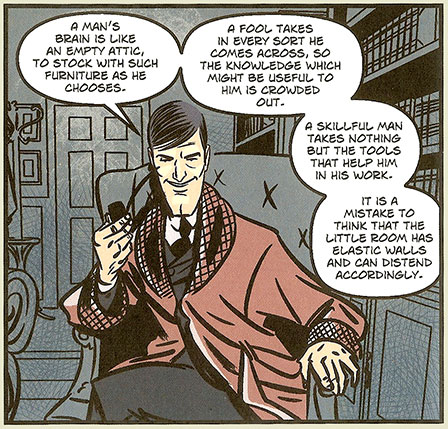
First lines: Well, actually, the first 25 pages don't have any words at all. So I am not sure I could say that this book has any first lines.
But I can tell you how the book opens. As a truck crosses a bridge at night, it hits a bump, and the rear door slides open. A box falls out and bounces off the road and into the river. The next morning an African-American girl wearing a nightshirt, climbs out of a window in a trailer park, and wanders off in search of something to do (and someone to play with). She eventually ends up down by the river where she finds the box, opens it, and finds a robot who doesn't even know how to walk yet. Armed with her toolbelt, she eventually overcomes her fear and helps the robot learn how to walk. Before long, however, the robot factory notices the robot is missing and sends out a huge and scary looking retrieval robot. Can the girl help the robot evade the danger?
Here is the thing about Ben Hatke, he tells what seem to be very simple stories, and then you get into them and find out there is a lot more to the story than you thought. In this book, Hatke somehow subtly weaves in themes of what it means to be a friend; how friendship can cross lines of diversity and even language; the connections between learning, growth, and building; and even what it means to be human and alive. As he did in the Zita the Spacegirl books, Hatke also gives us a heroine who is not only strong and resourceful, but also feels a range of emotions (with Zita, that meant she sometimes actually cried. With this unnamed heroine, she is clearly frightened and scared sometimes -- but she overcomes her fear when she needs to.
Hatke also gives us amazing images. One of my favorites is the little girl, in her tee shirt and toolbelt, dancing with Little Robot (who looks kind of like an animated trashcan).
It is hard to figure out the ages this book is intended for (in my mind, that is always a good sign). I think four year old pre-readers could make sense of it, but I also think elementary, middle school, and even high school kids could get a lot out of it.
Bottom line: This is one of my favorite books so far this year. You really need to get hold of it.



